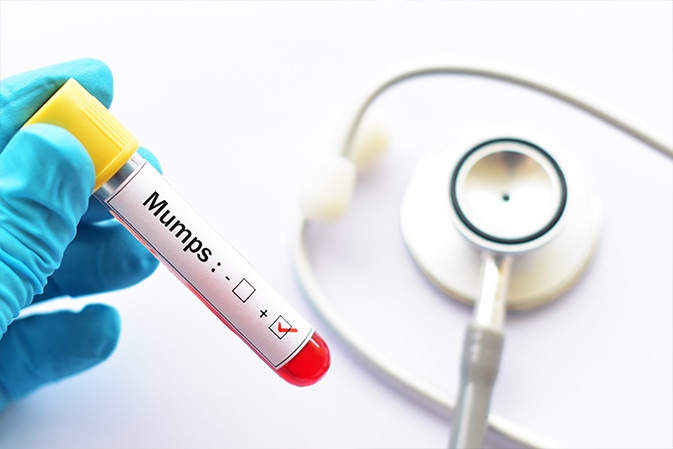Controlling a Mumps Outbreak in Washington
In late 2016 and early 2017, a mumps outbreak in Washington affected more than 800 people of all ages. Mumps is an extremely contagious viral disease and though it rarely requires hospitalization or is fatal, it can contribute to loss of productivity in a community, especially when a high number of cases keeps children from school and parents from work. The best way to prevent mumps is to get two doses of the measles, mumps, and rubella (MMR) vaccine. To respond to this outbreak, the Washington State Department of Health relied on its PHEP-funded laboratory and epidemiologic surveillance system capable of fast detection and identification of public health threats.
Because of the high number of cases, almost all of the affected counties requested help from the state when the outbreak surpassed local capacity. In response, the state health department used PHEP funds to mobilize an Epidemiology Task Force to support local health departments with case investigation, disease surveillance, and risk communication activities.
When a case was identified, an epidemiologist interviewed that person to determine how sick the patient was, who he or she had recently been in contact with and whether the contacts were feeling sick and had been vaccinated. If the patient was a student, the state health department contacted the school, and the school board notified parents and instructed them to keep sick children out of school. Because they may have been exposed to the virus, other students in the school who had not been vaccinated were instructed to stay home from school for at least 25 days, which also meant that parents often had to adjust their work schedule. Due in part to this inconvenience and the severity of the outbreak, more than 5,000 more people were vaccinated with MMR compared with previous years, strengthening the communities’ resilience to both the current outbreak as well as future MMR outbreaks.
One of the hardest hit communities in this outbreak was the local Marshallese community – a group of recent immigrants from the U.S. territory in the Pacific. The state health department had to adapt to the language and culture of this community to effectively communicate the risk, as well as the importance of preventive measures such as vaccination. To gain the community’s trust, health department officials worked with religious and community leaders to develop risk communication materials and conduct home visits. According to Michael Loehr, the Washington PHEP director, the adaptability of state and local public health responders in learning to work across cultures was one of the biggest successes of the response and will serve them well in the future.
The biggest challenge of this outbreak was that it occurred concurrently with another large, global outbreak – Zika virus. Pregnant women who were traveling to Zika-affected areas sought blood tests to make sure that they hadn’t been infected. Combined with the large number of mumps tests that needed to be conducted, the state lab was pushed beyond its normal capacity. This caused the health department to make tough choices about which tests took priority, highlighting the need for expanded laboratory capacity nationwide.

The mumps outbreak, which occurred concurrently with the global Zika outbreak, highlights the need for expanded laboratory capacity.
The Incident
In late 2016 and early 2017, a mumps outbreak in Washington affected more than 800 people of all ages.
The Response
The state and local health departments investigated new cases, advised local school districts on prevention measures, and developed culturally appropriate risk communication materials.
The Outcomes
More than 5,000 more people were vaccinated compared with previous years, and the state developed effective and respectful relationships with the local Marshallese community.